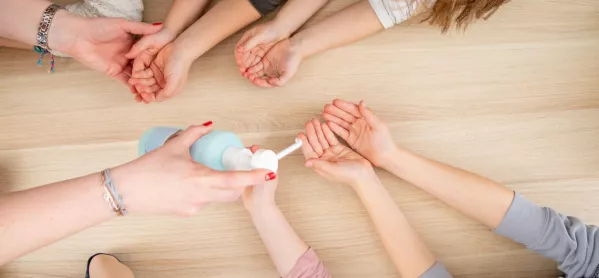Schools have been told to consider acquiring a number of key items to secure good hygiene standards when pupils return in June.
It may also be useful for corridors to be used “on a one-way basis” at any given time to reduce possible contact between different groups of children, according to new guidance issued today by the Department for Education.
The “Planning guide for primary schools” states that, once children are back in school, all frequently touched surfaces, equipment, door handles and toilets used during the day will need to be cleaned thoroughly each day.
Coronavirus: No answer on teacher non-attendance penalties
Related: Teacher safety debate needed, says Chris Whitty
Opposition: ‘Step back’ from 1 June school openings, ministers told
The DfE also advises schools to update their behaviour policies to reflect the new rules and routines, and communicate these changes to staff, pupils and parents.
Coronavirus: The safety issues for primary schools
The guidance sets out a “list of things to consider acquiring” for the purpose of keeping schools safe, including:
- Tape for cordoning off areas and marking floors.
- Lidded bins.
- Sanitising wipes for wiping some equipment.
- Disposable paper towels.
- Cleaning products.
- Soap for sinks, and where there is no sink nearby, hand sanitiser in rooms/learning environments.
- Posters (for example, to encourage consistency on hygiene and keeping to one’s own group).
The guidance also states that schools may wish to consider their plans for:
- The availability of soap and hot water in every toilet (and, if possible, in classrooms).
- The location of hand sanitiser stations, for example at the school entrance for pupils and any other person passing into the school to use, and their replenishment.
- The location of lidded bins in classrooms and in other key locations around the site for the disposal of tissues and any other waste; and their double-bagging and emptying.
- Ensuring that they have a good supply of disposable tissues to implement the “catch it, bin it, kill it” approach in each classroom, and enough to top up regularly.




